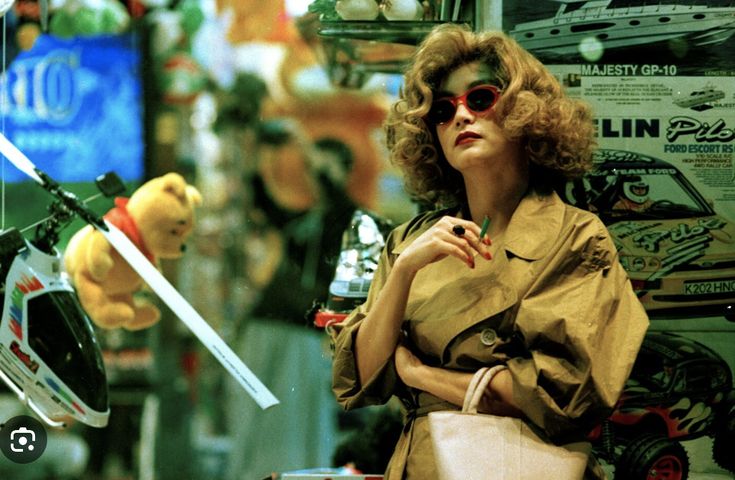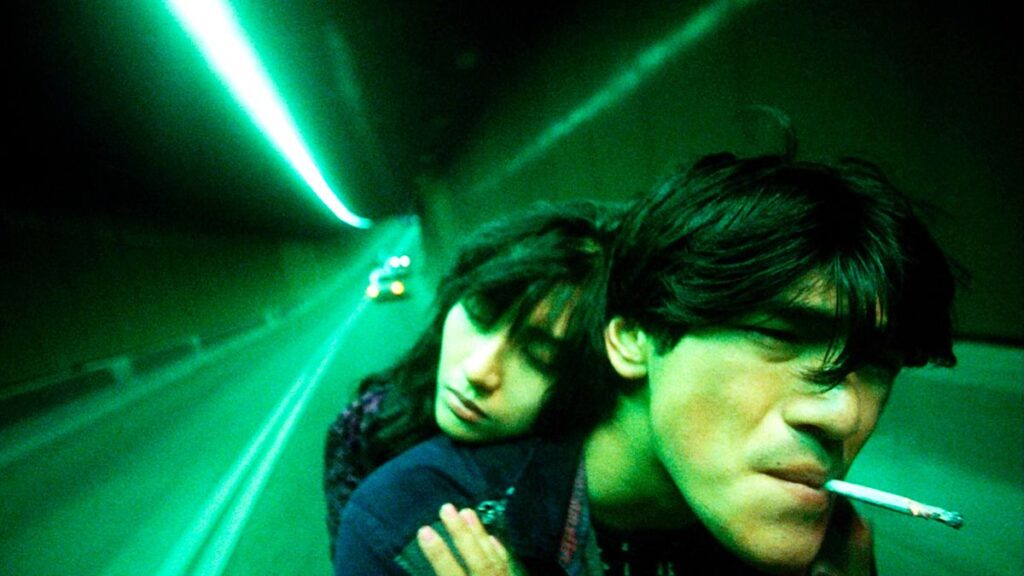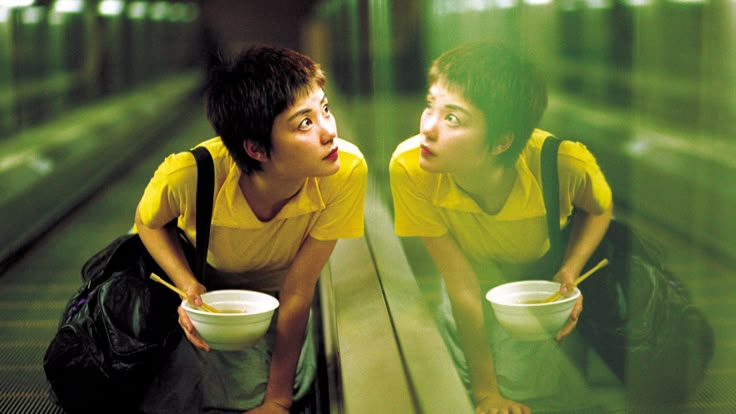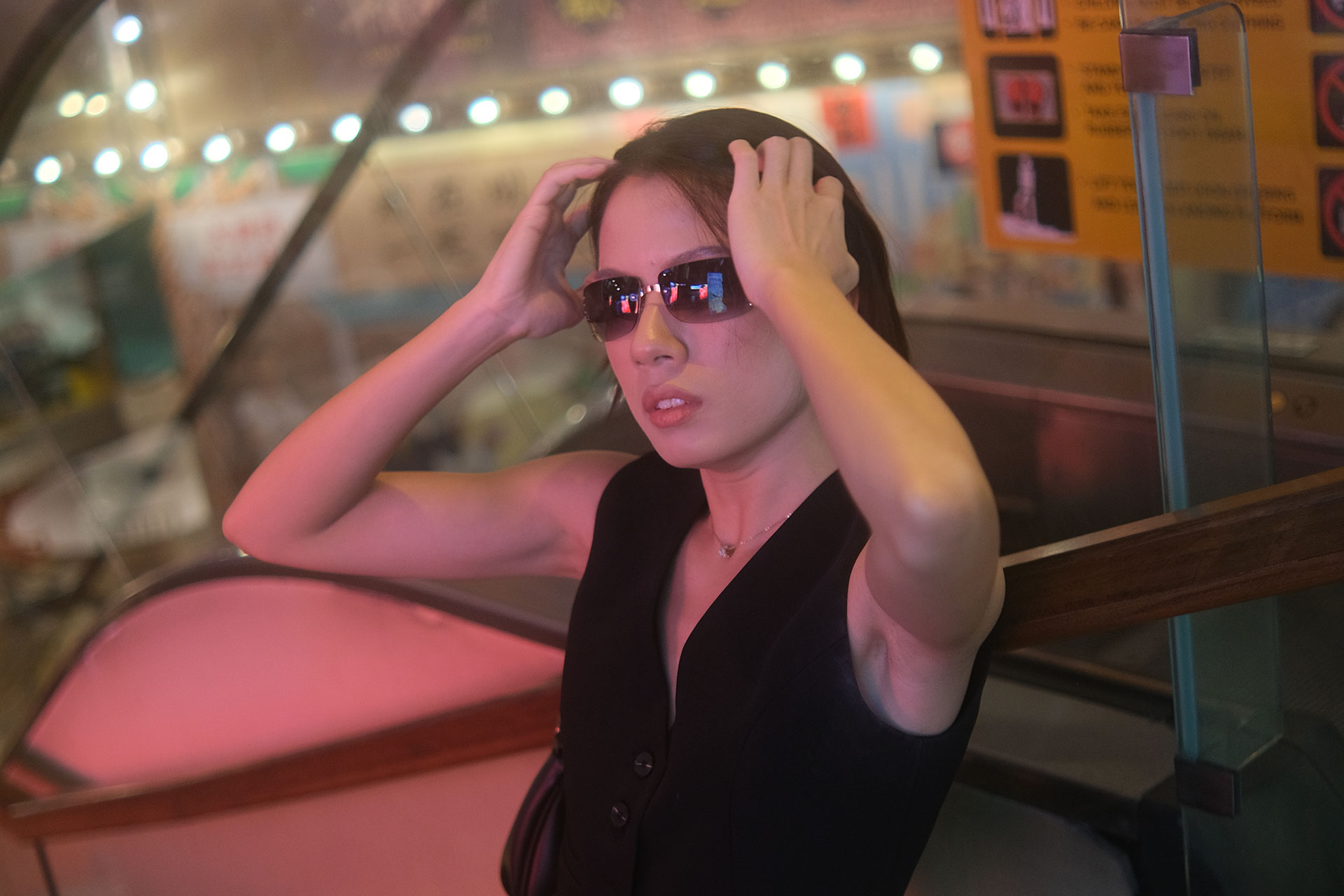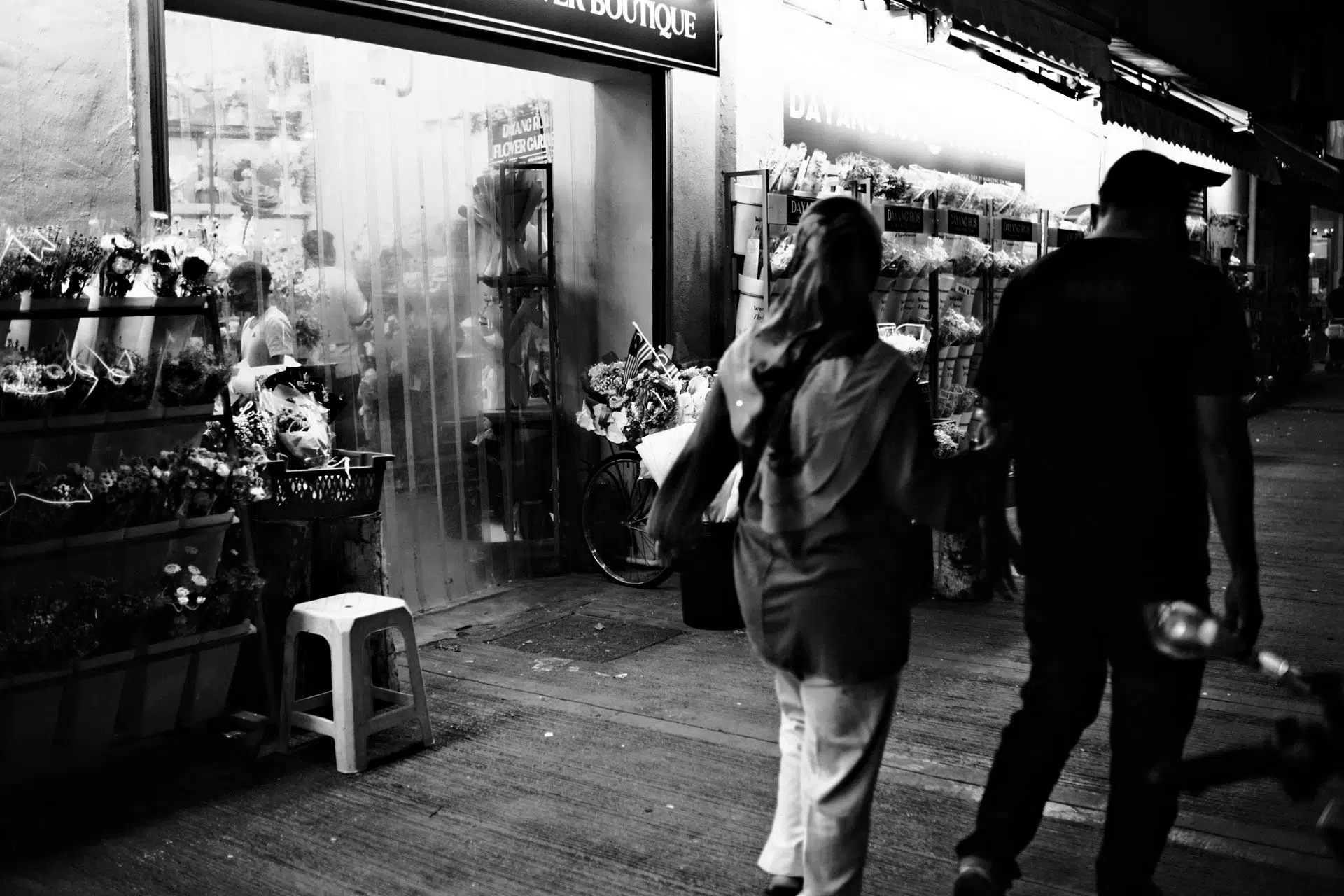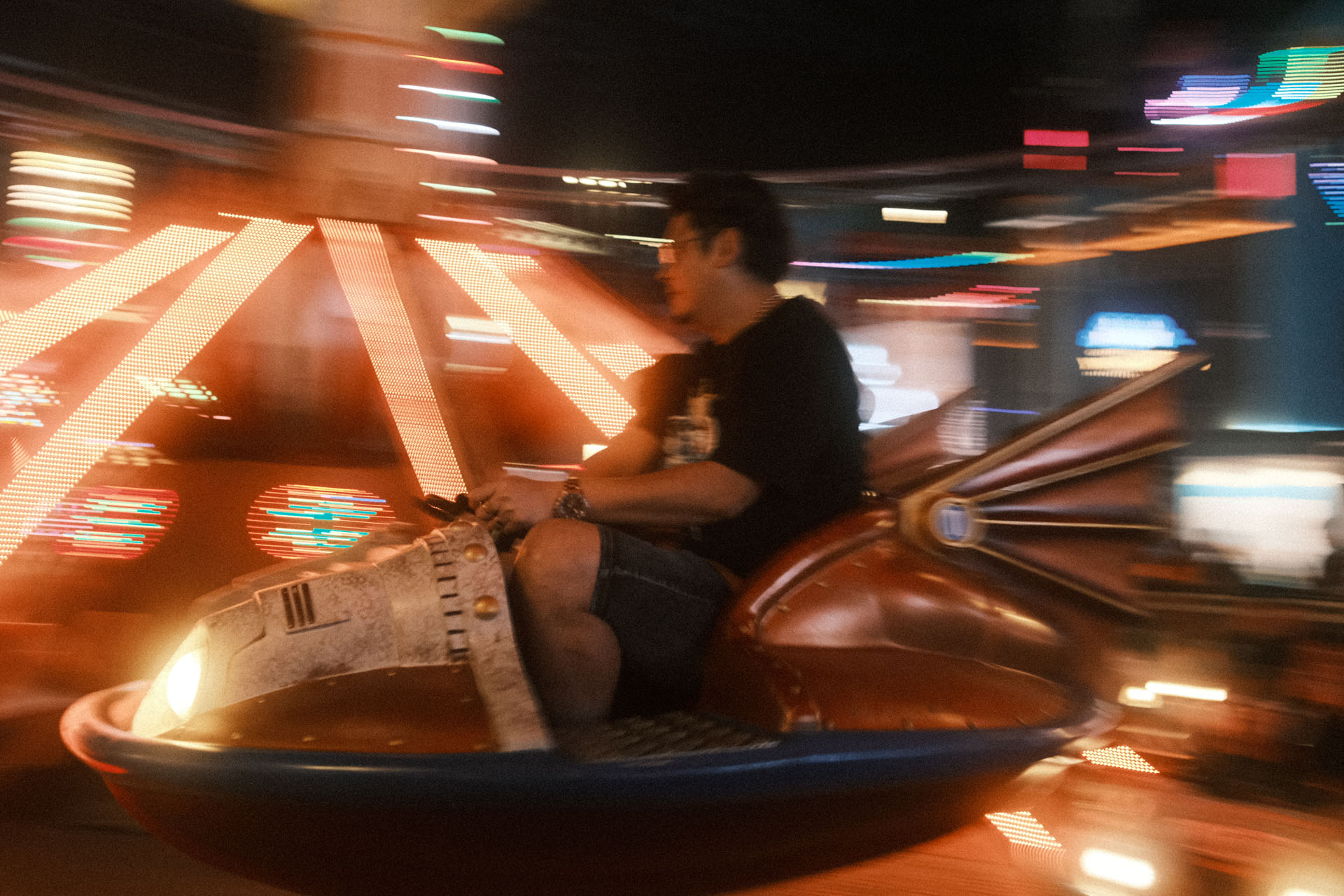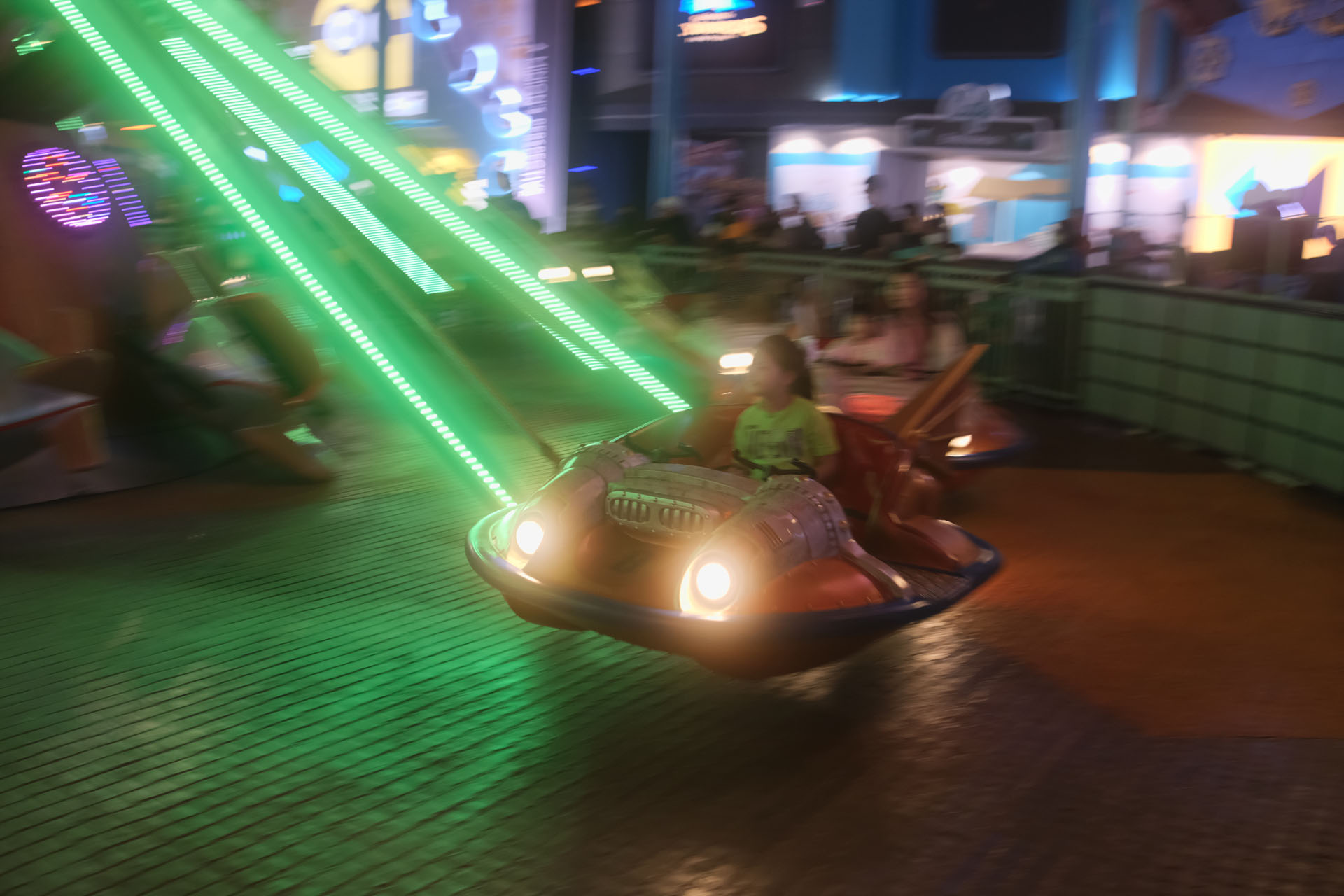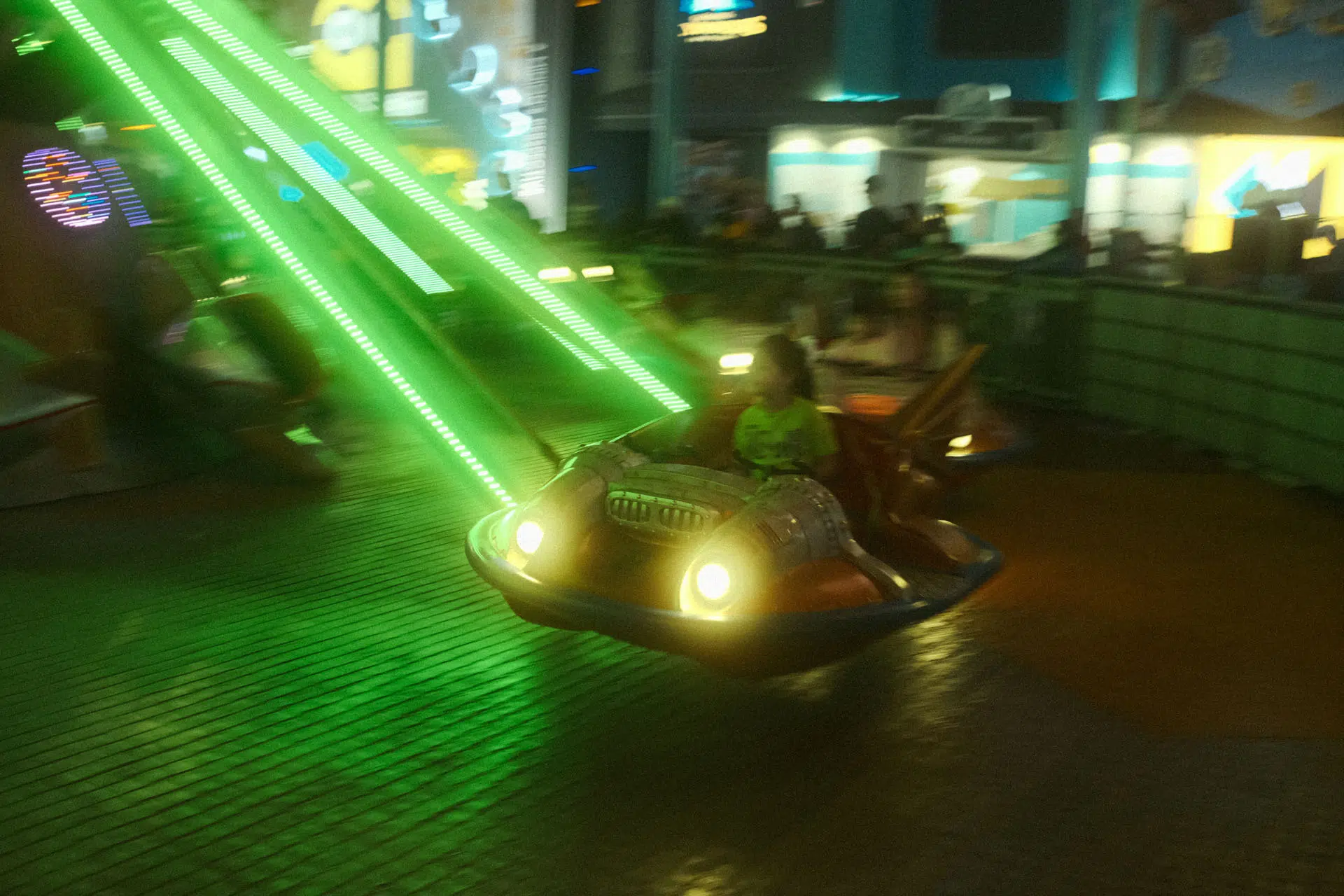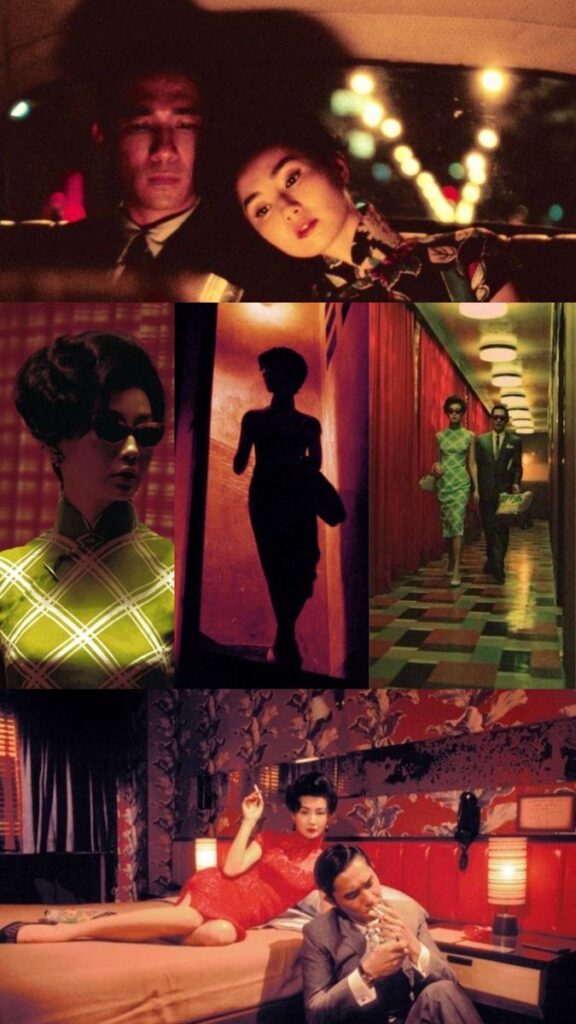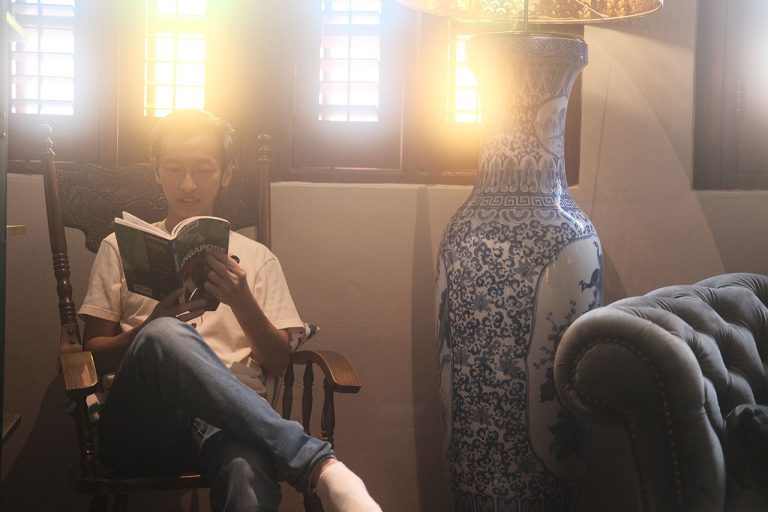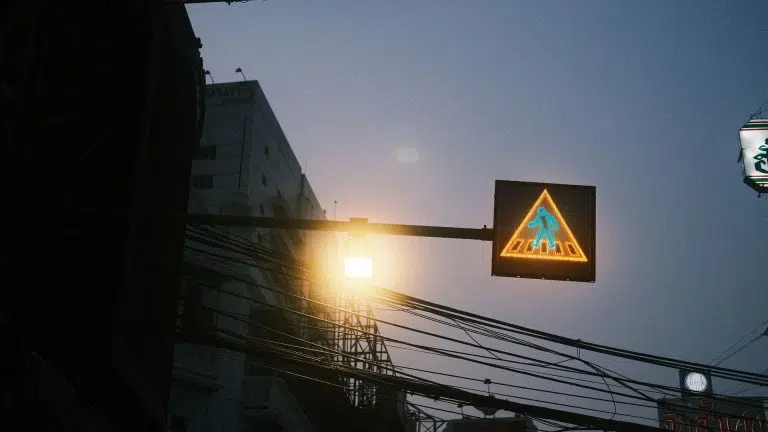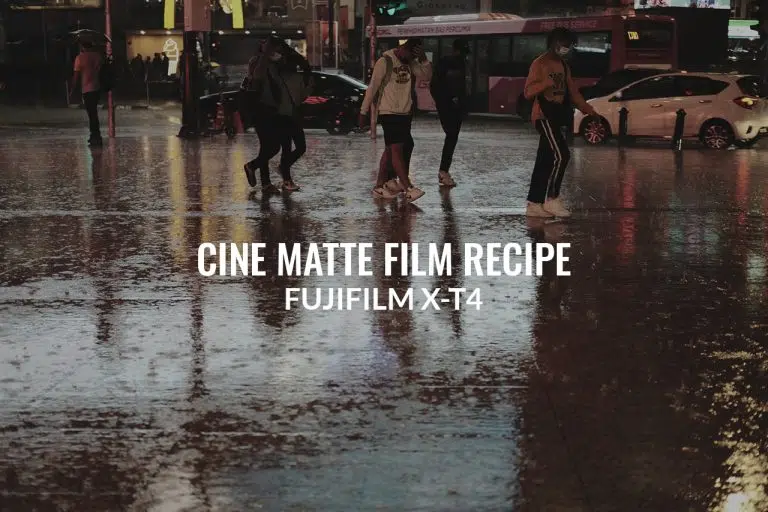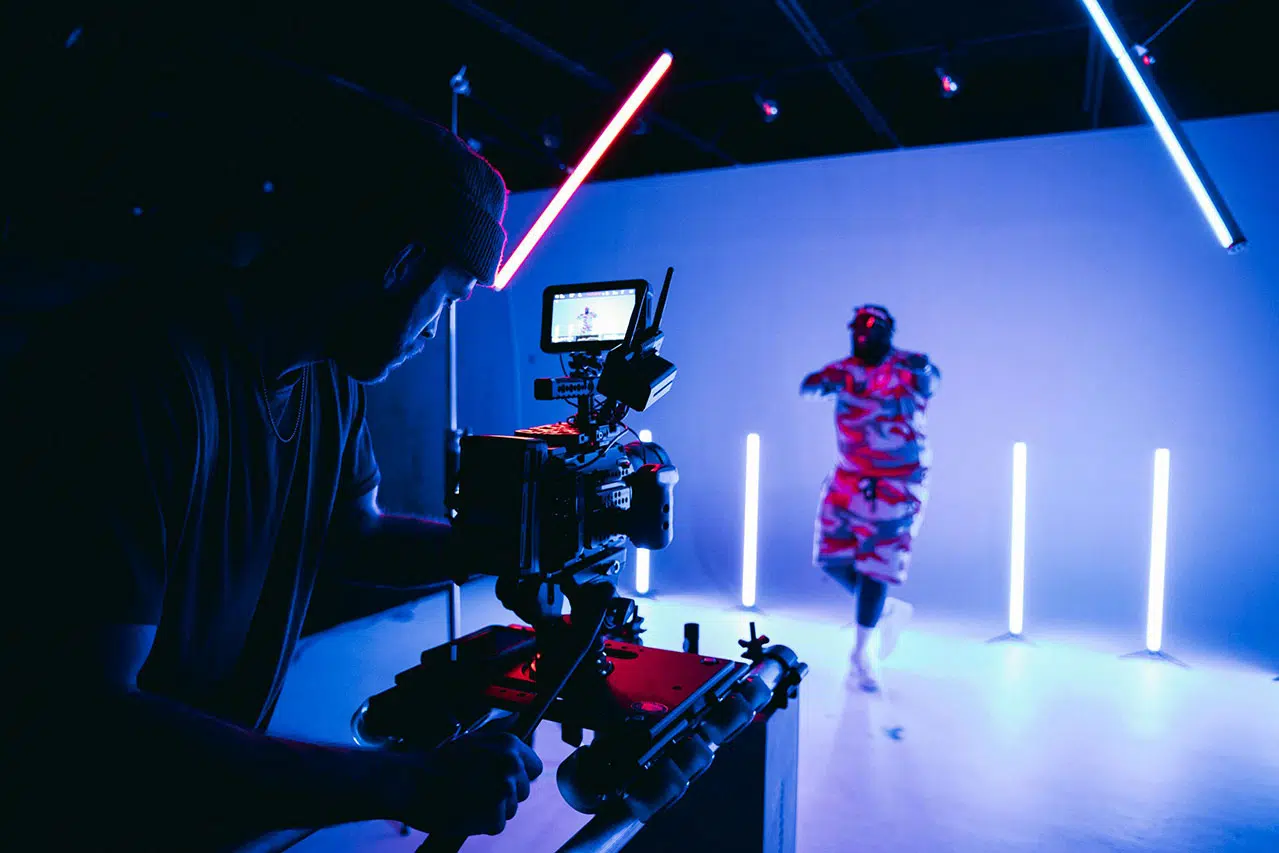1. Teal Obscure – Orange & Teal Recipe
If there’s one recipe that instantly captures the cinematic feel of Chungking Express or Fallen Angels aesthetic, it’s the Wong Kar Wai-inspired Teal Obscure recipe. This custom Fujifilm film simulation recipe is built around that iconic orange and teal cinematic color contrast—a classic combo seen in many of Wong Kar Wai’s most memorable night scenes.
The teal shadows give off that cool, almost surreal atmosphere, while the orange warmth from practical lights creates a lovely balance. The grain and contrast are tuned just enough to keep skin tones moody but natural.
Try this orange and teal Fujifilm recipe for night photography during blue hour, rainy evenings, or dim interiors to let the colors do the storytelling. It’s a perfect fit for anyone chasing that poetic, cinematic mood.
Use this recipe in low-light scenes, during blue hour, or indoors with mixed lighting to capture the Wong Kar Wai mood. Want more like this? Check out our guide to the Best Fujifilm Recipes for City Night Photography.
2. One For The Road – Black & White Film Look
Wong Kar Wai doesn’t always rely on color to tell a story. Some of his most emotional and reflective moments play out in black and white—like quiet walks at night, lonely train rides, or rain-soaked goodbyes. One For The Road is a monochrome Fujifilm recipe that captures that exact feeling.
This cinematic monochrome Fujifilm recipe is tuned with high contrast and soft highlights, giving your shots a vintage film noir feel. Blacks are deep, whites are gentle, and the midtones carry a soft emotional weight. It’s ideal for those moments where you want mood over detail—where grain, blur, and silence say more than color ever could.
Pair it with slower shutter speeds to enhance motion blur, or shoot handheld at high ISO to bring out the texture. It works incredibly well for Fujifilm black and white street photography, especially at night or in the rain. Think alleys with glistening pavement, reflections in bus windows, or someone sitting alone by a café window.
Whether you’re capturing solitude, movement, or emotion, this recipe creates frames that feel timeless and honest—like scenes from a forgotten movie reel.
If you’re into this style, don’t miss our full cinematic street photography film recipes collection—it’s packed with looks built for night shoots and bold color lighting.
3. Neon Obscura – Cinematic Night Vibes
If you love how neon lights spill over the screen in Wong Kar Wai’s films, Neon Obscura is your go-to recipe. Built on the Obscura simulation, it’s designed to absorb all the color from city signs, nightclubs, and corner stores.
This recipe pushes saturation just enough without going too far. Reds and purples are deeper, blues and greens glow subtly, and shadows stay rich and soft. The tone curve is tuned to keep contrast while letting color dominate the scene.
Pair it with street shots at night, parked cars under fluorescent lights, or rainy crosswalks for the best results. If you love this aesthetic, you’ll enjoy our full collection of cinematic street photography film recipes for Fujifilm. It’s packed with mood-driven looks for low-light shooting in the city, perfect for creating your movie-like scenes.
3. Cira 800 Film
Cira 800 might be based on an old Indonesian 35mm film stock, but the look you get from this Fujifilm recipe leans heavily into the same moody, cinematic feel seen in Wong Kar Wai’s films. It’s got that subtle greenish tone that mimic the Fallen Angels aesthetics, that makes everything feel a bit nostalgic, like a memory you’re slowly drifting back into. When you shoot under dim lights or rainy streets, the shadows stretch just right, and the glow from neon signs picks up a beautiful, soft tint.
While it’s not directly modeled after any Wong Kar Wai film, Cira 800 somehow captures the essence—think quiet alleys, reflections on wet pavement, and those intimate moments between strangers. It’s a great recipe for city night walks, late dinners, or those in-between moments when the world feels paused.
You won’t need to do any editing after either—everything comes together in-camera, SOOC. If you’re chasing that cinematic look with a little twist, this recipe will definitely speak to you.

